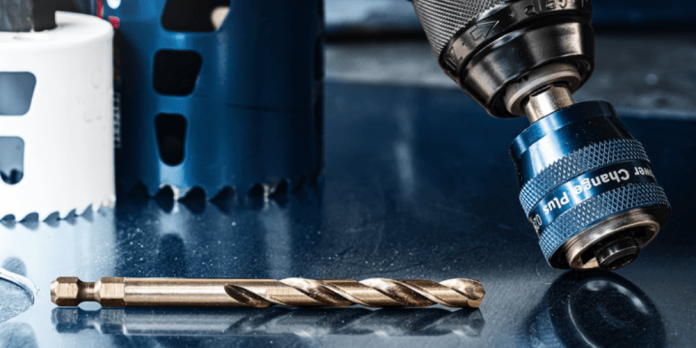Cutting through wood and metal with a pilot drill bit is a common practice used in many applications, such as woodworking, metalworking, and construction. The pilot drill bit is a smaller diameter drill bit that is used to create a guide hole or pilot hole that helps to accurately guide the larger drill bit or cutting tool through the material being worked on.
Here are the steps involved in cutting through wood and metal using a pilot drill bit:
Step-by-step guideline:
Step 1:Mark the location of the hole:
Use a pencil or marker to mark the location where you want to drill the hole.
Step 2:Select the correct size pilot drill bit:
Choose a pilot drill bit that is smaller in diameter than the larger drill bit or cutting tool you will be using. The pilot drill bit should be sharp and in good condition.
Step 3:Clamp the workpiece:
Secure the workpiece in place using a clamp or vice to prevent it from moving during the drilling process.
Step 4:Drill the pilot hole:
Use the pilot drill bit to drill a hole through the center of the marked location. Apply gentle pressure and use a slow, steady speed to prevent the bit from wandering or binding.
Step 5:Switch to the larger drill bit or cutting tool:
Once the pilot hole is drilled, switch to the larger drill bit or cutting tool and carefully guide it through the pilot hole. Use a slow, steady speed and apply gentle pressure to prevent the bit or tool from overheating or breaking.
Step 6:Finish the cut:
Once the larger hole is drilled or cut, remove any burrs or rough edges using a file or sandpaper.
You can ensure greater accuracy and precision when cutting through wood and metal by using a pilot drill bit. The pilot hole provides a guide for the larger drill bit or cutting tool, which helps to prevent the bit or tool from wandering and creating an inaccurate or damaged hole.
Pilot drill bit material:
Pilot drill bits are typically made from high-speed steel (HSS), which is a durable and heat-resistant material that is capable of cutting through a variety of materials, including wood, metal, and plastic. HSS is a type of steel that has been alloyed with elements such as tungsten, molybdenum, and cobalt, which gives it excellent hardness, toughness, and wear resistance.
HSS pilot drill material:
HSS pilot drill bits are ideal for use in applications where accuracy and precision are important, such as drilling holes for screws or bolts. They are also suitable for drilling through thicker materials, as they can withstand the heat and friction generated by the drilling process without becoming damaged or deformed.
Other pilot drill material:
In addition to HSS, other materials used for pilot drill bits include cobalt steel, titanium-coated HSS, and carbide-tipped drill bits. Cobalt steel has a higher percentage of cobalt alloyed with steel, which gives it greater heat resistance and toughness. Titanium-coated HSS has a titanium nitride coating applied to the surface of the bit, which reduces friction and helps to extend the life of the bit. Carbide-tipped drill bits have a tungsten carbide tip that is brazed onto the steel body of the bit, which makes them even more durable and resistant to wear.
Best choice:
The choice of material for a pilot drill bit will depend on the specific application and the type of material being drilled. For most general-purpose drilling applications, HSS pilot drill bits are a good choice due to their durability and versatility.












